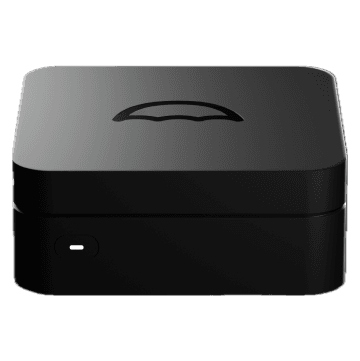Getting Started with umbrelOS
This guide will help you set up your personal server using umbrelOS to run Bitcoin and Lightning Network nodes, host your own apps, and take control of your data on your own hardware.
What is Umbrel?
Umbrel is a user-friendly platform that allows you to run your own personal server at home or in the cloud. With Umbrel, you can:
Run a Bitcoin and Lightning Network node
Install self-hosted apps like Nextcloud, Pi-hole, and more
Take control of your data and enhance your privacy
Prerequisites
Hardware Requirements
A computer or device to run umbrelOS (e.g., Raspberry Pi 5 or x86-based server)
At least 4 GB of RAM (8 GB or more recommended for multiple apps)
Minimum 32 GB storage for umbrelOS installation (1 TB recommended for Bitcoin blockchain or storage use)
Network Requirements
Stable internet connection
Router with available Ethernet ports
Installation Options
Choose the installation method that best suits your setup:
Option 1: Install on a Raspberry Pi
Hardware Requirements
Raspberry Pi 5
microSD card (32 GB or larger)
External SSD (1 TB recommended, optional)
Ethernet cable
Official Raspberry Pi power supply
Steps
Download umbrelOS:
Flash the SD Card:
Use balenaEtcher to flash the umbrelOS image onto the microSD card
For Windows users: Try Rufus if you experience issues with Etcher
Assemble the Hardware:
Insert the microSD card into the Raspberry Pi
Connect an external SSD to a USB 3.0 port on the Pi (Optional)
Connect the Raspberry Pi to your router using the Ethernet cable
Power on:
Use the official Raspberry Pi power supply to ensure system stability
Wait a few minutes for umbrelOS to boot up. Access umbrelOS by navigating to http://umbrel.local on any device connected to the same network.
Option 2: Install on any x86-based machine
Hardware Requirements
x86-based mini PC or server with a dual-core 64-bit Intel or AMD processor (Quad-core or higher recommended)
Internal storage drive (1 TB recommended)
Ethernet cable
USB thumb drive (at least 4GB)
Steps
Download umbrelOS:
Download the latest umbrelOS release for your x86 system here
Flash the umbrelOS USB Installer onto a USB drive:
Use balenaEtcher to flash the umbrelOS USB installer onto the USB drive (4GB+)
For Windows users: Try Rufus if you experience issues with Etcher

Boot from the USB stick:
Insert the USB stick into your device
Connect a display and keyboard (for desktops or NUCs/Mini PCs)
Connect an Ethernet cable to your device and router
Turn on the device and boot from the USB stick (adjust BIOS settings if necessary)
Install umbrelOS on internal storage:
After the system boots up, it will present you with the following screen:

Select the correct internal storage device for installation. For instance, in the above screenshot, if we want to install it on the 'ATA' drive, which has a capacity of '238.5G', we'd type
1and pressEnter.
Finalize installation:
After flashing, turn off the device
Remove the USB stick, keyboard, and display
Boot up!
Ensure the USB stick is removed and Ethernet cable is connected
Turn on your device
The first boot will take approximately 5 minutes. Access umbrelOS by navigating to http://umbrel.local on any device connected to the same network.
Remarks
Note: umbrelOS is specifically built for Umbrel Home. Support for other devices in umbrelOS is best-effort and not guaranteed. Compatibility issues may arise due to the differences in hardware, drivers, and as such, some features may be limited or restricted.
Important: If you have a display connected to your device or Pi, you might notice the
umbrel loginprompt in the terminal output. This prompt is for terminal access only. To use umbrelOS, there is no need to log in via the terminal. Instead, simply open http://umbrel.local on any device that is connected to the same network to access the user interface.
Tip: If you cannot access http://umbrel.local, and you are using a Windows computer, try accessing http://umbrel. Alternatively, use your router's admin dashboard or a network scanning tool like Fing to find your device's IP address on your local network. If needed, you can connect a display and a keyboard to your device, log in, and run
hostname -Ito find its IP address. Then, enter this IP address directly into a web browser to access umbrelOS.


